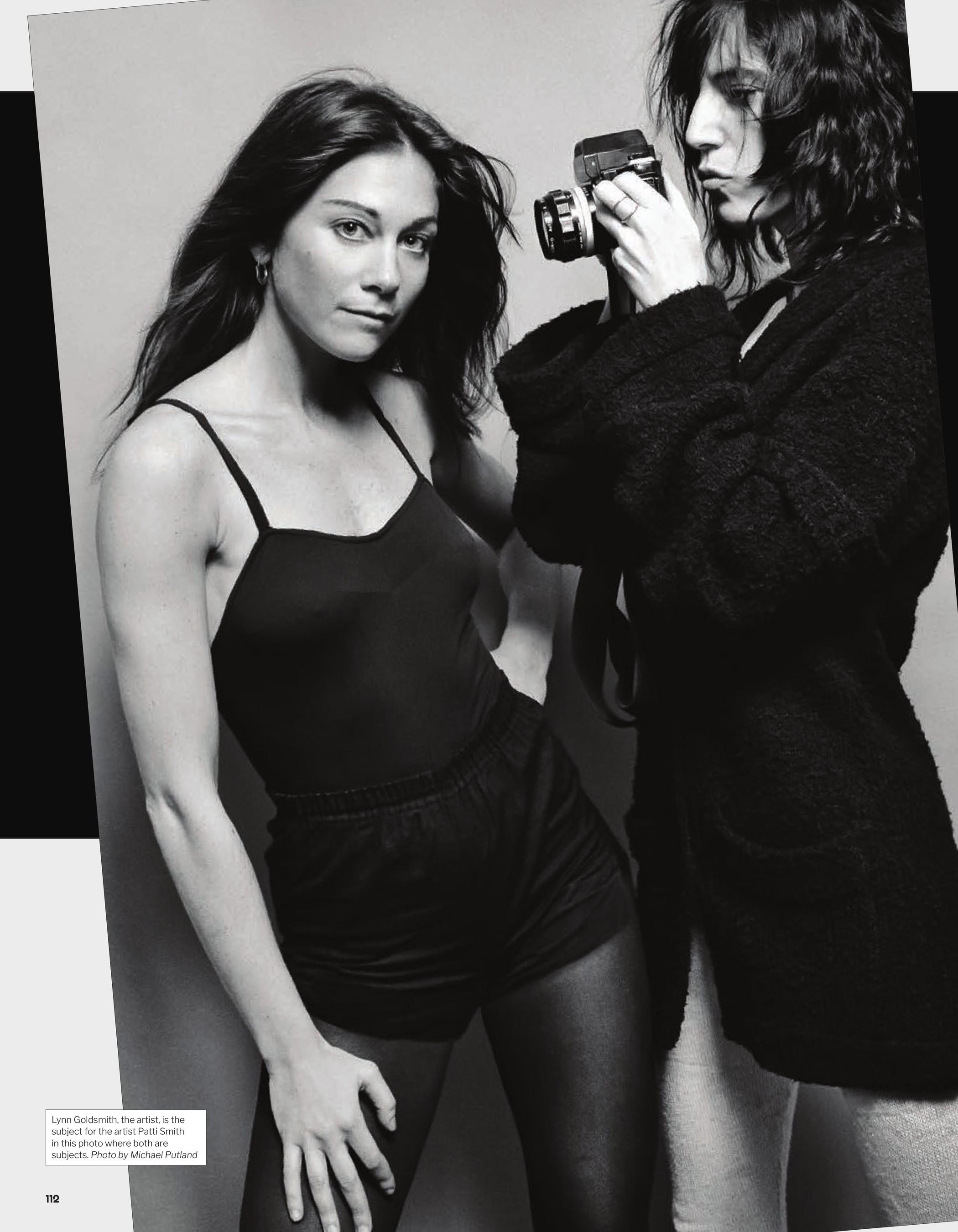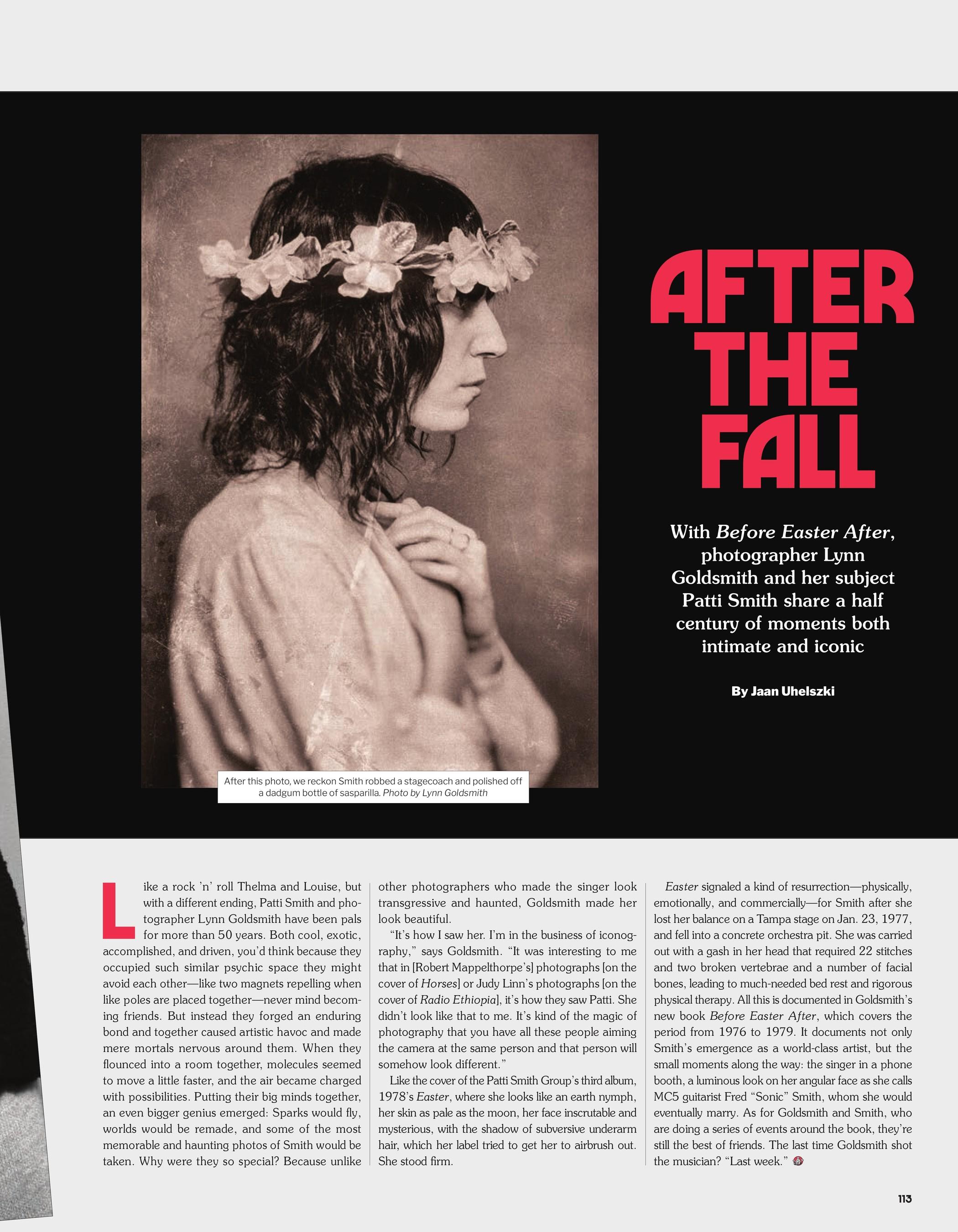AFTER THE FALL
With Before Easter After, photographer Lynn Goldsmith and her subject Patti Smith share a half century of moments both intimate and iconic.


Like a rock ’n’ roll Thelma and Louise, but with a different ending, Patti Smith and photographer Lynn Goldsmith have been pals for more than 50 years. Both cool, exotic, accomplished, and driven, you’d think because they occupied such similar psychic space they might avoid each other—like two magnets repelling when like poles are placed together—never mind becoming friends. But instead they forged an enduring bond and together caused artistic havoc and made mere mortals nervous around them. When they flounced into a room together, molecules seemed to move a little faster, and the air became charged with possibilities. Putting their big minds together, an even bigger genius emerged: Sparks would fly, worlds would be remade, and some of the most memorable and haunting photos of Smith would be taken. Why were they so special? Because unlike other photographers who made the singer look transgressive and haunted, Goldsmith made her look beautiful.

